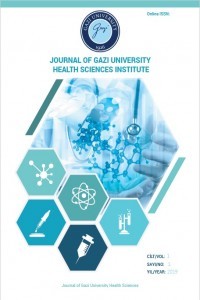Generalized Tonic-Clonic Seizure Due to the Concomitant Use of Bupropion Extended-Release and Moxifloxacin
Generalized Tonic-Clonic Seizure Due to the Concomitant Use of Bupropion Extended-Release and Moxifloxacin
Bupropion extended-release (XL), an amphetamine-like dual mechanism drug, is used for the treatment of major depressive disorder, and its use is associated with a dose-dependent risk of epileptic seizures. Moxifloxacin is synthetic fluoroquinolone antibiotic agent which has proconvulsant side effects. Although there is no drug-drug interaction between these two drugs, their concomitant use can trigger epilepsy. In this report, we discussed a male patient using bupropion XL, who developed generalized tonic-clonic seizure after treatment with moxifloxacin and had no history of seizures. The association of bupropion XL with catecholamines and the association of both bupropion XL and moxifloxacin with gamma aminobutyric acid were possible accused mechanisms. This case report suggests physicians to pay attention to the potential risk of bupropion XL- and moxifloxacin-induced seizures.
Keywords:
Bupropion Extended-Release, Moxifloxacin, Seizure Side Effect,
___
- Akahane, K., Sekiguchi, M., Une, T., & Osada, Y. (1989). Structure-epileptogenicity relationship of quinolones with special reference to their interaction with gamma- aminobutyric acid receptor sites. Antimicrobial Agents and Chemotherapy, 33(10), 1704-1708.
- Beard, E., Shahab, L., Cummings, D. M., Michie, S., & West, R. (2016). New pharmacological agents to aid smoking cessation and tobacco harm reduction: What has been investigated, and what is in the pipeline. CNS Drugs, 30(10), 951-983
- Chen, S. C. (2006). Epilepsy and migraine: The dopamine hypotheses. Medical Hypotheses, 66(3), 466-472.
- Cone, C., & Horowitz, B. (2015). Convulsions associated with moxifloxacin. American Journal of Health-System Pharmacy, 72(11), 910-912.
- Domagala, J. M. (1994). Structure-activity and structure- side-effect relationships for the quinolone antibacterials. Journal of Antimicrobial Chemotherapy, 33(4), 685-706.
- Mishra, D. K., Sardesai, U., & Rastogi, P. (2017). Seizure secondary to Bupropion extended release preparation: A report. Asian journal of Psychiatry, 30, 86-87.
- Orum, M. H., Egilmez, O. B., & Kalenderoglu, A. (2018). Bupropion extended-release-induced spontaneous orgasms. Dusunen Adam The Journal of Psychiatry and Neurological Sciences, 31, 107-109.
- Qiao, L., Cui, X., & Li, Y. (2011). Status epilepticus attributed to moxifloxacin in an adolescent patient with spina bifida occulta. European journal of clinical pharmacology, 67(1), 103-104.
- Shah, G. D. & Hirsch L. J. (2001). Bitemporal epileptiform discharges induced by bupropion: a case report. Clinical Neuropharmacology, 24(5), 304-306.
- Shi, J. & Xu, H. (2014). Moxifloxacin induced seizures –A case report. Iran Journal of Public Health, 43(9), 1291-1294.
- Starr, P., Klein-Schwartz, W., Spiller, H., Kern, P., Ekleberry, S.E., & Kunkel, S. (2009). Incidence and onset of delayed seizures after overdoses of extended-release bupropion. American Journal of Emergency Medicine, 27(8), 911-915.
- Wang G. L., Wang Y. P., Zheng J. Y., & Zhang L. X. (2018). Monoaminergic and aminoacidergic receptors are involved in the antidepressant-like effect of ginsenoside Rb1 in mouse hippocampus (CA3) and prefrontal cortex. Brain Research, 1699, 44-53
- Yang, Y. C., Yeh, T. C., & Liang, C. S. (2019). A case of recurrent seizures: Drug–drug interaction between low-dose clozapine and extended-release bupropion. Australian & New Zealand Journal of Psychiatry, 53(2), 175-176.
- ISSN: 2687-6353
- Yayın Aralığı: Yılda 3 Sayı
- Başlangıç: 2019
- Yayıncı: Gazi Üniversitesi
Sayıdaki Diğer Makaleler
Berrin ÖZÇELİK, Rachid BELHATTAB, İlkay Erdoğan ORHAN
Nagehan AKTAŞ, Didem ATABEK, Gülçin AKÇA, Nurhan ÖZTAŞ
Autism Spectrum Disorder, Microbiota And Nutritional Therapy Approaches
Şehriban DUYAR ÖZER, Gülçin SAĞDIÇOĞLU CELEP
The Antioxidant Activities and Total Phenol Contents of Eleven Turkish Medicinal Plants
